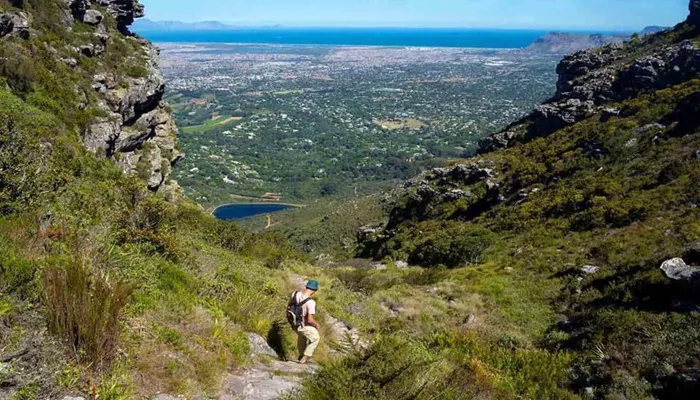East Africa, known for its stunning Rift Valley that spans 12 countries, offers exceptional opportunities for mountain trekking and highland climbing. The region features diverse terrains, from the gentle hill walks of Kenya’s Ngong Hills to the challenging trails of Mount Kenya and the iconic slopes of Mount Kilimanjaro in Tanzania. Hikers can enjoy rocky summits, mountain forests, and pristine jungles throughout this beautiful area.
With its vast network of trails, mountains, and volcanoes, East Africa ranks among the world’s premier hiking destinations. Its towering hills, accessible summits, winding forest paths, and flat savannahs cater to trekkers of various fitness levels and time constraints.
Among the many peaks, Mount Meru stands out. Located about 68 kilometers from Kilimanjaro, Africa’s highest mountain, Mount Meru rises to 4,565 meters in Arusha National Park. This second-highest mountain in Tanzania is often chosen as a practice climb for Kilimanjaro.
The trek to Mount Meru’s summit typically takes 3 to 4 days. Climbers are rewarded with breathtaking views of lush ancient rainforests filled with fig trees. As they ascend, the scenery transitions to heather and rocky moors. The trail also passes through habitats of diverse wildlife, including buffaloes, baboons, and giraffes, alongside hundreds of bird species.
Another prominent destination is Mount Elgon, located on the border of Kenya and Uganda. This towering volcanic peak is surrounded by misty hills and features a network of caves, picturesque valleys, and numerous streams. Visitors can explore nearby forests, discover elephant caves, and partake in biking and hiking adventures. At 4,321 meters, Mount Elgon is the eighth-highest mountain in Africa.
For those seeking a more leisurely hike, Tanzania’s Usambara Mountain Range is an excellent option. Unlike more challenging treks, the Usambara Mountains are easily accessible and do not require permits or the company of park rangers.
Rising to 2,440 meters, Usambara Mountain is home to over 3,000 plant species and more than 600 tree species. This mountain range, part of the Eastern Arc Mountains, runs parallel to the Tanzanian coast and extends into Kenya’s Taita Hills. The Usambara Mountains are recognized as a biodiversity hotspot, making them an ideal destination for nature lovers.
Other notable climbing destinations include the Rwenzori Mountains in Western Uganda, which reach 5,109 meters and cross into the Democratic Republic of the Congo. Ol Doinyo Lengai, known as the “Mountain of God,” is another significant peak in Tanzania, standing at 2,962 meters. It holds cultural significance for the Maasai people living nearby.
Most hiking locations in East Africa offer communal equipment, including tents, food, and cooking supplies. However, hikers are responsible for their personal gear.
Staying hydrated during hikes is crucial, but most parks do not permit plastic water bottles. Visitors are encouraged to carry water in Nalgene bottles, hydration bladders, or similar containers to comply with park regulations.
East Africa’s mountains provide an incredible backdrop for unforgettable trekking adventures, attracting hikers from around the globe.
Related topics:
- Hurricane Helene Slams Southeast, Killing 57 and Leaving Millions Without Power
- VA Ordered to Lock Down UCLA’s Jackie Robinson Stadium
- EVs and Batteries Boost Grid Resilience Amid Rising Demand

